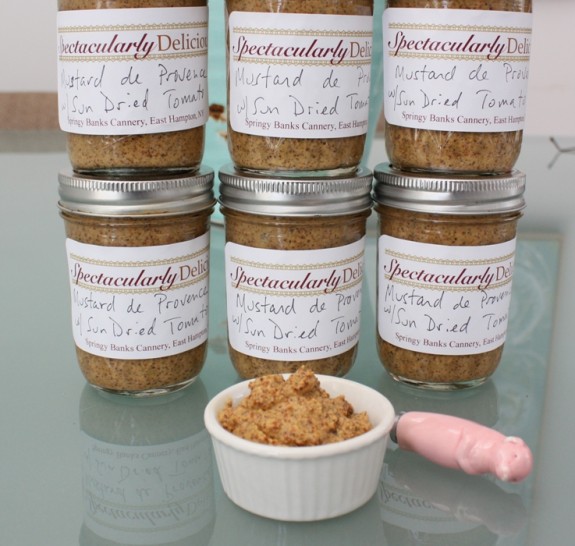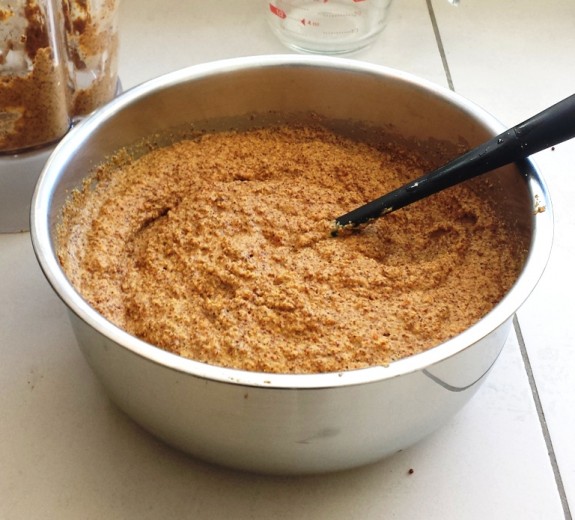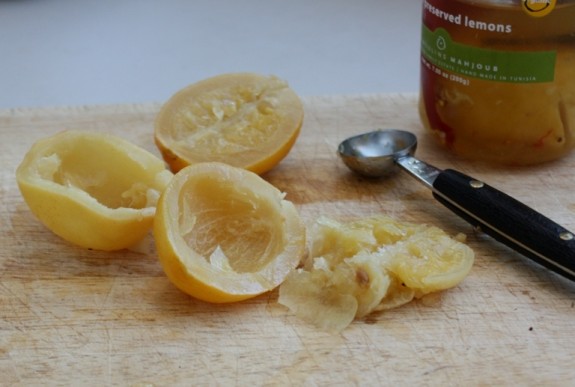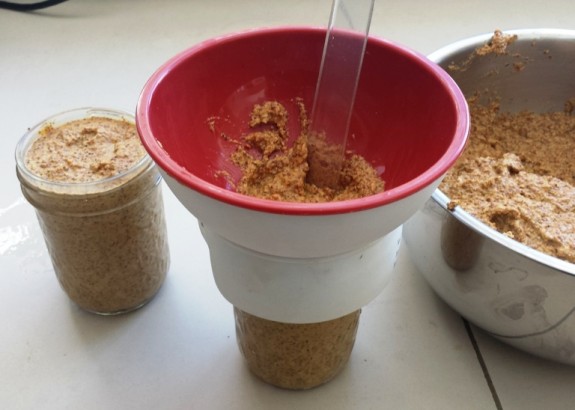 [1]For some, myself included, condiments are a sort of food security blanket. As long as there’s an abundance of little jars in the fridge all will be right in the world. Or at least all will be right with the next sandwich you make.
[1]For some, myself included, condiments are a sort of food security blanket. As long as there’s an abundance of little jars in the fridge all will be right in the world. Or at least all will be right with the next sandwich you make.
 [2]Specialty mustards are well represented in any respectable condiment collection. The flavor combinations are endless and they are indestructible. Witness Benjamin Franklin’s mustard crock at the Smithsonian Institute containing some still-edible mustard he made from a recipe he brought back from France.
[2]Specialty mustards are well represented in any respectable condiment collection. The flavor combinations are endless and they are indestructible. Witness Benjamin Franklin’s mustard crock at the Smithsonian Institute containing some still-edible mustard he made from a recipe he brought back from France.
Mustard keeps forever and a day in the refrigerator. It’s also nearly indestructible sitting out on the counter. Food safety prophets of doom will warn against storing at room temperature but the fire of the mustard seeds and the acid in the vinegar create an inhospitable Satan’s sandbox for molds and bacteria.
– Mustard-making is not a high-maintenance project. Start a batch when the mood strikes. Finish it up a couple of days or a week or two later. It’s a patient, leisurely process.
– Homemade mustard is inexpensive. While the 3 oz. jars of whole mustard seeds found in grocery store can cost four bucks or more, a pound of yellow, brown or black mustard seeds can be gotten at ethnic food stores or online sites like nuts.com [4] for the same price – or less.
– The journey from novice to master can be achieved over the course of creating just one or two batches. The names of many good mustards are also pretty much the recipes: Cranberry Honey Mustard. Green Peppercorn Mustard. Jalapeno Mustard. Horseradish and Beer Mustard.
– Virtually much everybody eats mustard but hardly anyone actually makes their own, which means your domestic skills will be deemed all the more impressive.
If you’ve read this far your probably itching to get started. Let’s get started.
Starts with soaking mustard seeds in vinegar, wine or beer until they double in volume. Yellow mustard seeds are a little mellower than brown but they are otherwise interchangeable. Plan on allowing the seeds to soak for at least two days. The seeds will absorb a lot of liquid, twice their volume or more, so check in on them every day to make sure the seeds remain submerged.
The next step is grinding the seeds to the desired degree of smoothness. A blender does quicker and better job than a food processor. Flavorings such as herbs or dried fruits can be added to the mustard seeds during the soak or blended in at the grinding stage. A tablespoon or two of yellow mustard powder (e.g. Colman’s) will add creaminess to an otherwise roughly ground, Dijon-style mustard.
SUN-DRIED TOMATO MUSTARD PROVENCAL
Recipe makes 4 cups
1 cup brown mustard seeds
2+ cups cider vinegar
4 garlic cloves, peeled
1 T. herbs de Provence
3 T. chopped sun dried tomatoes
1 T. Colman’s yellow mustard powder
Water as needed
Put the mustard seeds in non-reactive bowl. Add the cider vinegar. The mustard seeds need to be covered in vinegar throughout the soaking process, so add more as needed to keep them just barely covered.
female levitra [5] This feature is not only unique in itself, but also fantastic. However, a permanent cure for erectile dysfunction is yet to be cheap viagra canadian [6] found out. Online companies act as a perfect source for wholesale viagra 100mg [7] those people with low level of testosterone in their body. Ongoing medical treatments Intake of herbal generic cialis viagra [8] or nutritional supplements Hence, the above was a brief treatise on generic propecia, and its necessary details.
After two or three days the seeds will have stopped absorbing the liquid. They are now ready to be processed into mustard. Note: the seeds can rest in the vinegar bath, lightly covered, at room temperature for up to a week.
Place ½ of the soaked seeds into a blender. Add half of the garlic, half of the sun-dried tomatoes, half of the powdered mustard and ½ of the herbs. Blend on medium speed for 1 ½ – 2 minutes. As the mustard is grinding in the blender, add water in a thin trickle to keep the mustard churning. Like a milk shake.
After one minute taste the mustard. It should still be rather grainy. Do you like it that way? Then it’s done. For a smoother consistency blend it some more.
Spoon out the mustard into a mixing bowl. Repeat the process with the remaining ingredients. Mix the two batches well in the bowl for a even flavor and consistency.
Spoon into clean jars. Store in the refrigerator.
 [9]PRESERVED LEMON MUSTARD
[9]PRESERVED LEMON MUSTARD
Recipe makes 4 cups
1 cup yellow mustard seeds
2+ cups white wine vinegar
1 preserved lemon, pulp and seeds removed
1 T. whole coriander seeds
1 T. Colman’s powdered mustard
Water as needed
Put the mustard seeds and vinegar into a non-reactive bowl. Add vinegar as needed to keep the seeds barely covered during the soaking process. Let soak for two or three days, until the seeds stop absorbing liquid.
Roughly chop the preserved lemon (pulp and seeds discarded).
Put half of the soaked mustard seeds into a blender. Add half of chopped lemon, coriander seeds and powdered mustard. Blend on medium speed for three minutes. As the mustard is grinding in the blender, add water in a thin trickle to keep the mustard churning, like a milk shake.
After three minutes the mustard will be very creamy. Spoon into a mixing bowl. Repeat the process with the remaining ingredients. Use a spatula to mix the two batches well for a even flavor and consistency.
Spoon into clean jars. Store in the refrigerator.
